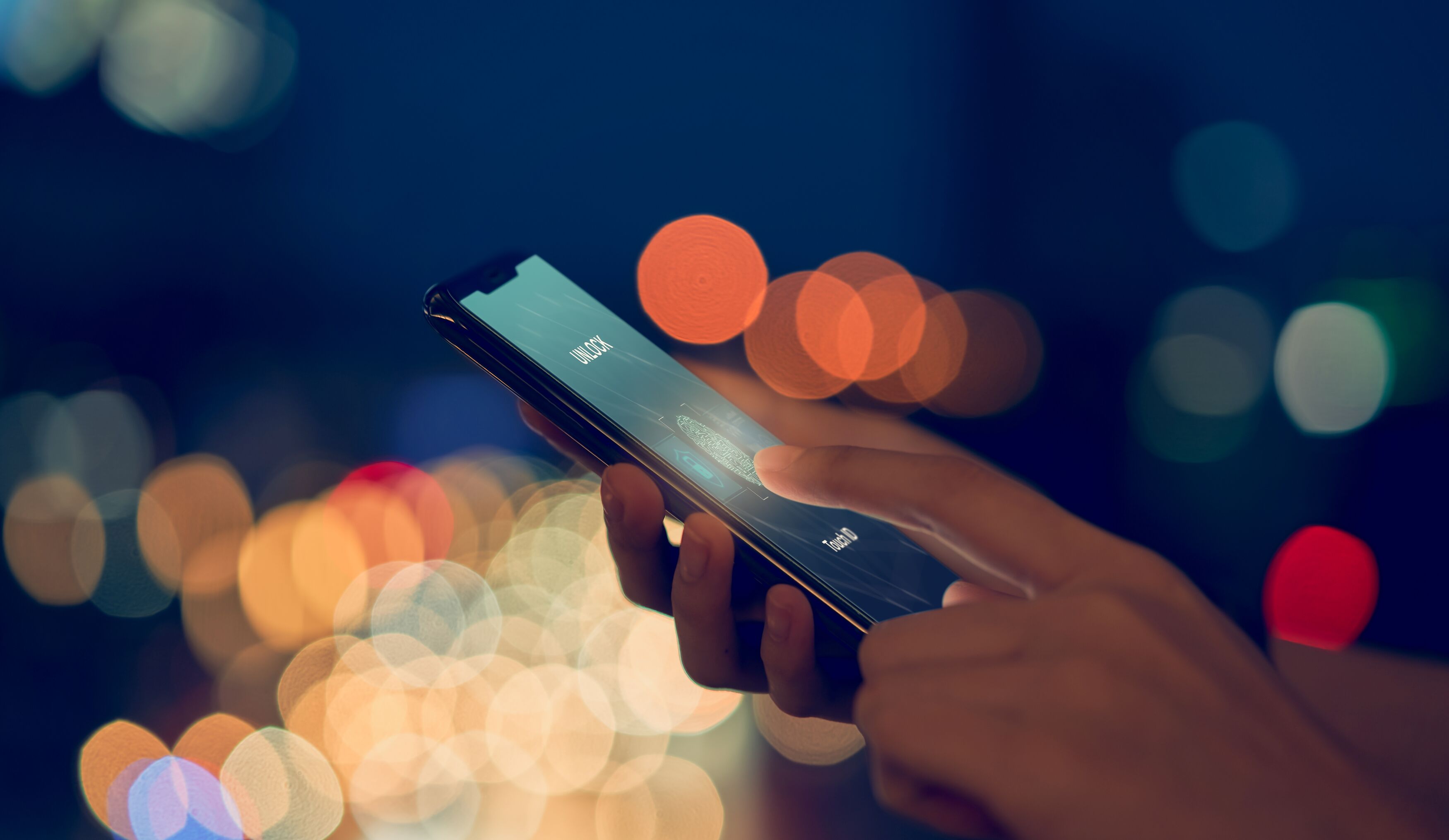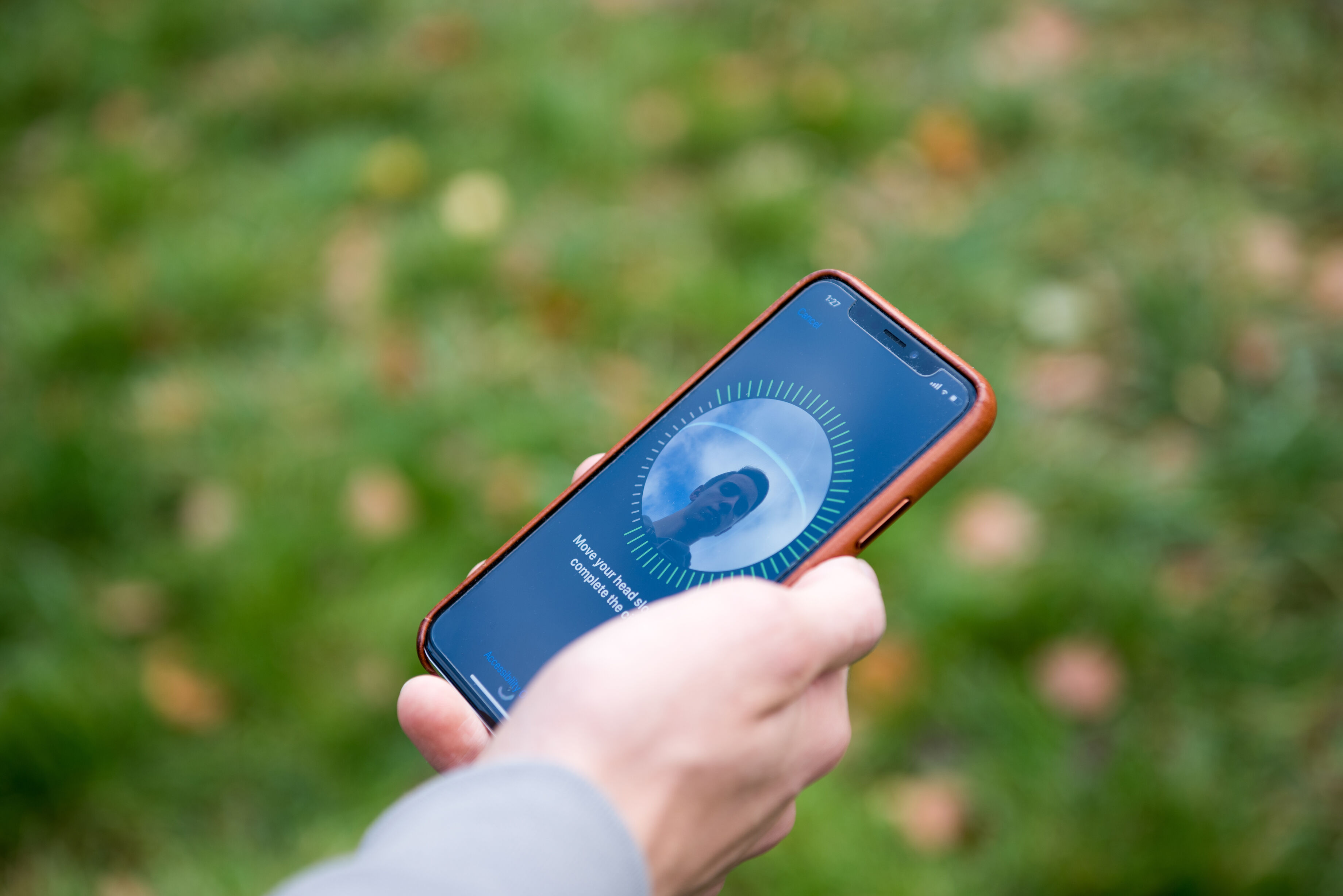Biometric authentication is a new vaster and more secure way to access a device or an application. It makes it possible to encrypt a device and let the user unlock it with their face, fingerprint, or even iris. But why would you opt for biometric authentication in your application, how safe is it to use this data and how is it securely stored?
First things first, what is biometric authentication?
With biometric authentication, you provide your users to access their device or their favorite application by making use of their biometric data. The password or pin code can be replaced by a quick fingerprint scan, face recognition, or even by an iris scan. These days biometric authentication is very common but there are still some questions about the safety and security of working with biometric data.

How do we store your data safely?
Since security and privacy are hot topics these days, biometric data must be handled and stored with care. That is why there are some rules that need to be followed when making use of biometric data.
When an application uses, for example, fingerprint data, it is saved on the TEE hardware. This is a separate piece of hardware that has its own operating system. Android, for example, uses Trusty OS. It is separated from the main OS to make sure everything is kept in a secure location even if the phone is rooted or the bootloader is unlocked.
When biometric authentication is integrated into an application, developers will only get to see success, failure, or too many attempts. The application can't read the actual data that is saved on the TEE hardware. That way they will never be able to access the actual biometric data of the user.
These rules are set to ensure the security and privacyof users when saving and storing their biometric data.
Why would you opt for Biometric Authentication?
For one, to make your applications as user-friendly as possible from the very first moment your users get in touch with them. Entering a password or pin code every time users want to access an app can be quite frustrating. So it’s a lot easier if they can just open the app and get authenticated in milliseconds instead of typing their full, complex password. Or, even worse, than having to trigger a password reset.
Secondly, by making use of biometric data you can ensure that when a user is logging in to your application, they are the only ones having access with their own credentials. This is a big deal in terms of privacy and security.
Instant authentication can be activated by choosing a 1-time registration, SSO (Single Sign-on). After that a simple pin code can be used or, even better, they can log in using biometric authentication.

The main advantages of Biometric Authentication:
As we already said, making use of biometric authentication will make it easier for your users to access your application, but there are other advantages to using biometric data to log in:
Fast access: by using a fingerprint scan or face recognition you can lock and unlock your device or application in less than a second; compared to typing your password, this is a major time saver
Increasing accuracy: fingerprint scanning provides almost 100 % of accuracy during authentication
Safe and secure: a comfortable access solution without the chance of exposing your information to cybercriminals
Great user experience: fast, simple, and convenient
Non-transferable: only you can access your biometrics and everyone has a unique set of them
As you can see, Biometric authentication is not only safer but also a lot faster. So when building an application where the user needs to log in, we suggest always opt for your users to touch or stare their way into it.

